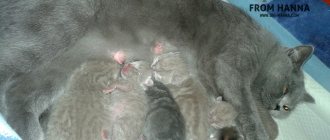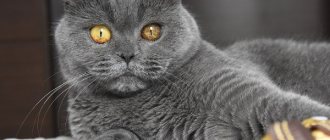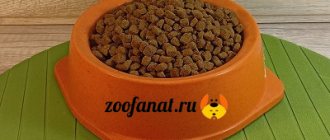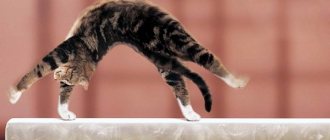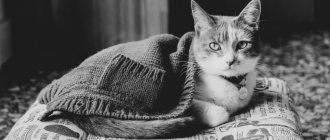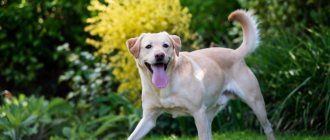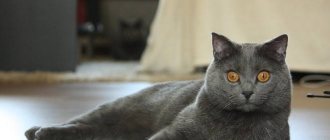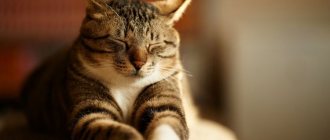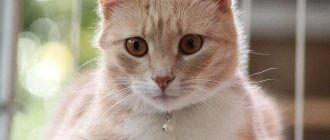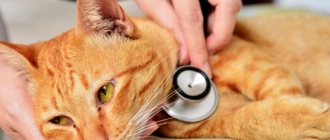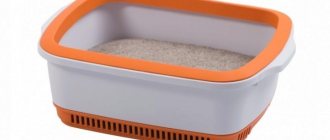Feeding cats with natural food is as close as possible to the conditions of the wild. Despite this, such a diet has its disadvantages and nuances. Before feeding your animal regular foods, be sure to familiarize yourself with possible problems and features. This will help you weigh the pros and cons between dry food and natural food.
Why owners choose natural feeding
Most owners refuse dry food, choosing a more natural way of feeding. Citing the advantages of a “straight woman” as an example, they often forget about her shortcomings.
Advantages
The main advantage is the ability to independently control the quality of ingredients. This eliminates the presence of harmful chemicals and artificial components.
With this type of nutrition, it is easier to choose an individual diet, based on the characteristics and preferences of your pet. It is much easier to accustom to “natural” than to “drying”. Cats are carnivores, so they happily eat meat and offal.
Possible disadvantages
Natural food for cats should always be fresh, which means it will have to be prepared every day. This takes a lot of time and effort, so not all owners are ready for such sacrifices.
In addition to the laboriousness of preparation, it is worth noting the difficulty of achieving a balance of KBJU (calories, proteins, fats and carbohydrates) and the mandatory inclusion of vitamin and mineral supplements. There is also a high probability of helminth infection or poisoning associated with improper storage or preparation of products.
Choose protein-rich recipes
Owners should be aware that cats need a lot of protein (they need 5 times more protein than dogs), which inevitably means that a dog's food may not be a normal diet for a cat. For each type of animal (for example, cats, dogs, chinchillas), it is necessary to prepare separately. There are many simple and affordable recipes that can be used to provide complete and balanced nutrition for your cat.
Of course, as we all know, cats are picky eaters, so there is no guarantee that they will like all the recipes, but there are sure to be some that they will like. The main thing is to start with what your cat likes and what smells good.
Main components of the diet
A natural diet for cats consists of proteins, fats and carbohydrates. Their percentage ratio should ideally be 52:36:12.
Proteins: meat and dairy products
Proteins are used in the construction of new cells and act as the main source of energy. All of them are divided into 2 large groups:
- Animals
. Contained in meat (chicken, turkey, beef, rabbit, lamb), offal (liver, lung, heart), fish, eggs and fermented milk products (cottage cheese, kefir, yogurt). Chicken protein is the easiest to digest, and the worst is beef and lamb protein. Such proteins contain many amino acids and taurine, an essential element responsible for cell protection and regeneration.
- Vegetable
. Contained in soybean meal, corn gluten and wheat. They are less digestible than animal proteins and put a strain on the kidneys, which leads to alkalinization of the urine. Can be used in small quantities as a temporary alternative to more expensive animal proteins.
When feeding, it is necessary to use well-frozen raw and boiled meat or sea fish, cleaned of bones. Fish can be given no more than 1-2 times a week, since the thiaminase it contains destroys vitamin B. Eggs should be given according to the same scheme.
Fermented milk products cannot serve as the main dish, so they are used as an additive.
Where are fats found?
Fats are responsible for energy “in reserve.” They are also responsible for the absorption of fat-soluble vitamins and the synthesis of certain hormones. The most beneficial fatty acid is Omega-6, found in fish. This element can also be obtained from corn, pumpkin or flaxseed.
Remember to maintain balance. A lack of fat can affect the quality of skin and coat, and an excess can lead to pancreatitis and intestinal upset.
Carbohydrates: cereals and vegetables
Carbohydrates make up the smallest portion of a cat's natural diet, as they take much more time and effort to digest. In the wild, these elements enter the cat's stomach in a semi-digested form through a captured rodent.
Despite this, a small amount of carbohydrates is simply necessary for mustachioed pets. Of these, the following elements enter the body:
- fiber, which normalizes stool and facilitates hair removal;
- adhesive substance that prevents constipation;
- glucose, which supports the functioning of the kidneys, brain and other vital organs;
- prebiotics that normalize intestinal microflora and facilitate the absorption of food.
Carbohydrates come from raw, boiled or steamed vegetables (broccoli, zucchini, pumpkin) and fruits (apples). Complex carbohydrates include oatmeal, buckwheat, rice and egg.
Vitamins and microelements
Unlike “drying”, “natural” for cats should be supplemented with vitamin and mineral complexes. The most important elements include:
- manganese;
- iodine;
- calcium;
- potassium;
- iron;
- taurine;
- phosphorus;
- potassium;
- omega 3 and 6;
- B vitamins and ascorbic acid.
It is better to discuss the choice of drug with your veterinarian, since the dosage is calculated individually. Additionally, you can add sprouted oats and brewer's yeast to your food.
A lack of vitamins is accompanied by deterioration in coat quality, loss of body weight, loss of activity and frequent colds. Excess is no less dangerous, so never buy drugs on the advice of friends.
Expert recommendations for choosing a nutritious diet
Veterinarians are also positive about formulating a diet for cats based on natural products. Currently, the BARF (Biologically Appropriate Raw Food) system is widely used in Europe and America. It was invented in the nineties of the last century by veterinarian Ian Billinghurst from Australia. However, feeding only raw foods is associated with certain risks for the health of cats, so our doctors adhere to the need for heat treatment.
Video: veterinarian talks about the correct natural diet of an animal
What components must be present in a cat's diet?
A balanced diet includes proteins, fats, carbohydrates and vitamin-mineral complexes. Their quantity and daily calorie intake are determined based on data on the cat’s age and weight: for this purpose, it is recommended to use reference tables.
Based on these data, you can calculate the amount of necessary components in the diet.
What foods should be included in a cat’s diet:
- Meat, poultry and meat products are the main source of protein and essential amino acids. They should be served raw (exclusively after freezing), boiled or stewed. It is recommended to use lean beef, lamb, rabbit, chicken and turkey to feed your cat. Lamb, pork, duck and quail are too heavy for the animal's stomach, as they contain a lot of fat. Among meat products, preference should be given to ventricles, hearts and liver.
- Fish contains lipids, amino acids, phosphorus and magnesium. It is recommended to use sea fish to feed cats: unlike freshwater fish, it does not accumulate toxic substances in its composition. Fish should be given boiled, after removing the head, fins, tail, scales and all bones: these components are not digested in the stomach. The most useful fish include: pink salmon, hake, salmon, trout, taimen.
- Butter and vegetable oil are essential sources of fats and vitamin E, help strengthen vascular walls and increase resistance to infections. A lack of fat in an animal's diet can lead to reproductive dysfunction. Oil should be added to food in an amount of no more than half a teaspoon.
- Dairy products and eggs. Dairy products are rich in calcium and protein and are easily digestible by your pet's body. These include kefir, fermented baked milk, natural yoghurts without additives, cottage cheese, sour cream. Mostly the yolk is used from eggs for cat diet: it contains the required amount of fat.
- Porridges and cereals act as a source of slowly digestible carbohydrates. To feed your furry pets you should use buckwheat, oatmeal or rolled oats, millet, rice, boiled in water. It is better to avoid semolina porridge: it has no nutritional value and contains only empty carbohydrates.
- Vegetables are not only a source of healthy vitamins, but also fill the need for fiber. It improves the functioning of the gastrointestinal tract and stimulates digestion processes. Vegetables need to be boiled, baked or ground into a paste using a blender. Most often, cats' menu includes pumpkin, zucchini, broccoli, carrots, and beets. Cabbage, potatoes, legumes and peas cause excessive gas formation, so they are not used. You can use spinach, green onions, celery, and basil as healthy additives.
Cats can often develop interesting taste preferences. The cat of my grandmother, who lived in the village, loved raw cucumbers very much and regularly stole them from the garden. The fluffy pet could handle a whole cucumber alone and never refused a supplement. My sister's cat really loves bananas and melons, but since they contain a lot of sugar, the animal manages to enjoy them only occasionally.
Photo gallery: healthy food for pets
Meat should be served cut into small cubes
Dairy products are rich in calcium
Cereals satisfy the need for slow carbohydrates
Vegetables are the best source of fiber and vitamins
What foods should you avoid altogether?
Some foods and additives familiar to humans are strictly prohibited from being used in the diet of cats. The body of furry pets is much more sensitive to various food components. An incorrectly formulated diet can lead to the development of serious diseases of the liver, stomach, bones and joints, or even cause premature death.
What should not be added to a cat's diet:
- Ketchup, mayonnaise, adjika and any other sauces. They contain a lot of spices and can also be very salty and spicy. If you think that the dish prepared for your pet is dry, it is better to dilute it with sour cream or meat broth.
- Meat trimmings, chicken skin, chicken bones. These leftovers do not provide any nutritional value, but can become ballast for your pet's digestive system. Sharp edges of bones and their fragments can injure a cat's delicate gastrointestinal tract.
- Sausage, frankfurters, sausages, stewed meat, meat pates. These products are more adapted to the human diet: they contain many third-party additives and soy, but they cannot replace real meat.
- Sweet yoghurts, snowballs, condensed milk, ice cream. Despite the fact that these products also belong to the dairy category, they contain too much sugar. It has been proven that even minor consumption of condensed milk creates a risk of damage to the pancreas and the development of diabetes in cats.
- Floury. Bread, any pastries and cookies are poorly absorbed in the body of a furry pet and provoke constipation.
- Tea. Many owners are touched when their cat drinks the rest of the tea from their mug. However, tea (especially black tea) contains caffeine, which has a stimulating effect on the animal’s nervous system and leads to the development of restless behavior and hyperactivity.
While studying at the university, in one of the classes on clinical laboratory diagnostics, we studied the composition and properties of urine using the example of cat urine. One of my classmates collected urine from her cat and brought this sample to class for research. Our teacher conducted several tests with special strips that detect the presence of glucose in urine: they turned out to be positive. It turned out that the day before, a classmate fed her cat sweet yogurt: this caused a sharp jump in sugar levels in the animal’s body. The teacher recommended reconsidering the furry pet’s diet and giving up such food forever.
Photo gallery: prohibited products for animals
Sausages contain a lot of soy and third-party additives
Flour slows down your cat's digestion
Mayonnaise contains a lot of fat
What foods should not be given to a cat?
Before feeding your cat natural food, read the list of prohibited foods. These include:
- millet, pearl barley, semolina and corn cereals;
- river fish and any bones;
- potatoes and mushrooms;
- legumes and white cabbage;
- onions, sorrel and garlic;
- pork and lard;
- grapes and raisins.
Milk is only beneficial for kittens, since the body of adult animals does not digest lactose. It is also worth excluding any handouts from the table: flour, spices, pickles, smoked foods, sweets, fatty and fried foods.
Let's look at how to feed your cat natural food correctly.
It is important to be aware of the benefits of fat in the diet. The benefits of vegetable and animal fats are great. Animal fats include butter, egg yolks, fish oil and organ meats. The following vegetable oils are useful for cats: flaxseed, sunflower, corn and olive. They are added to the food at the rate of ½ teaspoon.
Your pet gets energy from carbohydrates. It is impossible to deny the benefits for cats of various cereals - buckwheat, oatmeal, rice, corn, wheat.
As an example of a healthy and balanced meal, we give the following: cereal cooked in broth and milk, to which butter or vegetable oil and pieces of meat are added. From this dish the cat will receive a full range of nutrients.
Calculation of the daily portion of natural drinks
On average, the daily portion for an adult cat is 5% of body weight. For simplicity, you can limit yourself to this indicator, but it is more reliable to take into account the characteristics of your pet and calculate not the number of grams, but the total calorie content.
For this purpose, it is recommended to use the following formula:
K*(30*m + 70), where K is the multiplier coefficient, and m is the weight of the animal.
The coefficient values can be found in the table below.
| Physiological features | K |
| Lactation period | 2-4 |
| Pregnancy | 1,6-2 |
| Adult and active animal | 1,6 |
| Adult animal with low activity | 1,4 |
| Kitten or adult animal with low weight | 1,2-1,4 |
| Presence of castration or sterilization | 1,2 |
| Elderly age | 1,1 |
| Frequent overeating, fraught with rapid obesity | 1 |
| Physician-confirmed obesity | 0,8 |
If your cat is carrying kittens and weighs 4.5 kg, then she will need 328-410 kcal per day. To get the serving size, the indicated number of calories must be divided by 2, since adults eat twice a day.
When feeding naturally, we recommend paying attention to the following vitamins:
Fit-Barf MicroMineral for cats . This product has been taking care of pets' health for over 15 years . The supplement for cats contains moringa, moor and green mussels, which makes this natural collection as beneficial as possible and has no analogues. Each of the components is organic. For example, green mussels contain large amounts of taurine, which cats need constantly. Humic acids support the gastrointestinal tract.
| Fit-BARF MicroMineral for cats - on order | Brewer's yeast - 1184 rub. |
Fit-Barf Intestinal flora - a supplement that supports intestinal function and is necessary for conditions that are associated with poor nutrition and intestinal microflora. The liquid consistency is easy to use, and is also aromatic and tasty. To avoid the need for digestion medication for cats, it is recommended to take FIT-Barf Intestinal Flora.
| Intestinal flora — 1128 rub. | Plantain — 1266 rub. |
Fit-Barf Oil Collection - a mixture of natural oils - will provide the correct balance of essential fatty acids in the cat's body. If the cat does not eat natural food and there are concerns that healthy foods with fatty acids are not entering the body, then collecting oils from cdVet will solve the problem. Fats are sources of energy and provide a thick coat and healthy skin. The supplement contains flaxseed oil and evening primrose oil, wheat germ oil and pumpkin seed oil, as well as valuable argan oil.
| Collection of oils - 1545 rub. | Salmon oil — 683 rub. |
For those owners who are unsure which product from the Fit-Barf line to choose, an excellent option is the Starter Kit for Cats . It includes three complete supplements: Micro Mineral for Cats, Green Mussels and Cod Liver Oil. The good thing about the set is that the products included in the composition are very helpful in transitioning your pet to natural feeding, as well as to supplements from the Fit-Barf system for cats.
| BARF Starter kit for cats - 3605 rub. | Vital — 2016 rub. |
Fit-Barf Mineral is a system supplement that is necessary when feeding cats raw meat. It contains calcium in the form of eggshell powder, seaweed limestone, yeast, malt and other components. Due to the additive, metabolic processes and physiological functions of organs are supported.
| Mineral — 1780 rub. | Green mussels - 1622 rub. |
Fit-Barf Intestinal flora plus . An excellent assistant in the presence of pathogenic bacteria and microorganisms. The supplement will also help with imbalances caused by antibiotics. Fermented herbs will help compensate for the deficiency of beneficial microorganisms. The rich composition of the vitamin complex contains fermented thyme, mint, nettle, hibiscus, chicory, oregano, etc.
| Intestinal Flora Plus — 1320 rub. | Bio-Hemp oil - 828 rub. |
Important Rules
Feeding your cat natural products should be safe. Be careful when purchasing meat to avoid the presence of hormones and parasites.
Maintain regular feedings. This will help wean you off begging and eliminate prolonged feelings of hunger. Kittens up to 3 months are fed at least 6 times a day, gradually reducing the frequency to 2 times a day by 1 year.
Serve food in the same area and be sure to use different bowls if you have multiple pets. This will eliminate fights with subsequent overeating in the strongest pet. Remember that food should be at room temperature, and leftovers should be thrown away or refrigerated for several hours.
Natural homemade food recipes for furry pets
Dishes for your cat can be not only healthy, but also varied. You can prepare your pet’s main meal, desserts and various pleasant treats yourself.
Many dishes prepared in this way can be poured into containers or placed in special bags and frozen. This way you will save yourself from lengthy cooking and provide your cat with a supply of food for a long time.
Recipes for preparing healthy dishes:
- Nutritious pate. Boil 0.5 kg of any meat for half an hour, then remove from the pan and add carrots and broccoli to the resulting broth. They must be cooked until half cooked. Pour boiling water over one glass of rolled oats and leave for 15 minutes, then pour out the water. Mix the meat with vegetables and oatmeal in a blender until it becomes a soft paste, add broth if necessary.
- Chicken gizzards with buckwheat. Pour half a glass of buckwheat porridge with water for a day. Boil chicken gizzards and one large carrot, then grind them in a meat grinder or using a blender. Add a small piece of butter to the porridge, pour in the gizzard and carrot pate.
- Millet porridge with turkey and vegetables. Boil small beets and carrots, peel and finely chop the raw zucchini. Divide the turkey into small pieces and cook millet porridge. Grind the vegetables together with the meat in a meat grinder, then add to the porridge. If necessary, you can dilute the dish by adding egg yolk.
- Lamb fillet with rice porridge. Grate freshly frozen lamb meat along with raw carrots. Boil the broccoli and rice in advance, then mix all the ingredients in a bowl with a small amount of olive oil.
- Beef with vegetable stew. Cut the boiled beef into small pieces, mix with baked pumpkin, stewed carrots and zucchini, pour in meat broth.
My cat really loves stewed liver: this dish ranks almost first among her taste preferences. The recipe is quite simple. Cut the liver into small pieces, grate the carrots, chop the green onions. Pour some water into a small frying pan, add all the ingredients and simmer for 20-25 minutes. It turns out to be a quite tasty and nutritious dish that can be mixed with any porridge.
How to prepare a healthy and tasty treat for your furry baby:
- Beef patties. On a fine grater, grate frozen beef (about 200 g), one large carrot, 3 lettuce leaves and 30 g of celery. Add 2-5 drops of olive oil and stir, then beat one egg into the mixture. Yandex Form thin flat cakes, place them on baking paper and bake at a temperature of about 140 degrees until they become golden brown.
- Curd balls. Take thick cottage cheese with 1-2% fat content, mix it with a few tablespoons of sour cream. Form small balls and place them in the refrigerator for a couple of hours to set.
- Chicken with cheese. Peel the skin from the chicken breast, then cut into small pieces. Place it in the oven at 150 degrees, grating no more than 1 tablespoon of hard, lightly salted cheese on top.
Approximate diet for 4 days
Before going to the store, think through your diet for the week ahead, based on the permitted products. For an example, check out the menu for an adult pet for 4 days.
| Day | 1st meal | 2nd meal |
| First | Cottage cheese with raw quail egg | Boiled cod with vegetables |
| Second | Minced chicken with vegetables, seasoned with vegetable oil | Chicken fillet with buckwheat and carrots |
| Third | Boiled beef with zucchini | Boiled chicken liver with oatmeal and herbs |
| Fourth | Broccoli puree with cottage cheese, seasoned with kefir and vegetable oil. | Chicken hearts with cottage cheese |
When selecting a menu, do not forget to take into account the KBZHU in order to eliminate the shortage of necessary elements. Pay special attention to animals with special needs.
Use a variety of meat sources
The more there are, the better (chicken, turkey, beef, rabbit, duck, etc.). This provides a more complete balance of nutrients and also enriches the feeding with different tastes and textures. You can use different sources of meat at the same time.
There are different opinions regarding the use of bones in preparing cat food. Personally, I never use them due to the risk of choking, puncture or blocking the digestive tract.
Feeding cats with special needs
A separate category includes pets, marked in the table with the calculation of the coefficient for determining the daily calorie content. In addition to the number of calories, when planning their menu you will have to take into account several more important nuances.
Pregnant and lactating females
During pregnancy and lactation, females provide food not only for themselves, but also for their kittens. For this reason, during these periods, calorie content is increased by 1.5-2 times. Due to changes in the amount of food, the feeding frequency is increased to 5-6 times. This makes it easier to digest.
The pet should be fed with chicken egg whites and vegetable oil should be added to its food. This will help avoid too much protein consumption during lactation and prevent constipation.
Kittens
For the first 4-8 weeks, kittens need enough mother's milk. After this time, you can introduce the first complementary foods, consisting of:
- meat broth and minced meat;
- vegetable puree;
- boiled yolk;
- slimy rice porridge and semolina;
- low-fat cottage cheese, kefir and yogurt.
Unlike adults, most of a kitten's food should consist of carbohydrates. For bone growth, make sure you have enough calcium.
Elderly individuals
With age, metabolic processes slow down. An older cat needs much less food than a young cat. Additionally, dental problems develop. During this period, you should use soft and easily digestible foods, increasing the number of meals to reduce the load on the stomach.
Allergy sufferers
If you suspect an allergy, you need to find the allergen. To do this, use an elimination diet, which involves the gradual elimination of staple foods. First of all, it is recommended to remove chicken and egg whites, as they often cause allergic reactions.
With chronic diseases
For chronic urolithiasis, it is recommended to reduce proteins, abandoning plant-based ones in favor of animal ones. Chicken, turkey and rabbit put much less strain on the kidneys and liver, so they are more preferable.
Another useful recommendation for sick pets is split meals. Frequent, but small portions reduce the load on the damaged organ and facilitate the digestion process. It is better to find out the exact menu from your veterinarian, as it is always selected individually.
Spayed and neutered animals
Sterilization and castration slow down metabolism, causing a tendency towards obesity. After surgery, you need to use more fiber to create a feeling of fullness with a small amount of calories. You should also avoid fish in any form, since removal of the reproductive organs increases the risk of developing urolithiasis.
Underweight or overweight
If you are underweight, it is forbidden to rely on fats, since a weakened liver will not be able to cope with such a load. To gain weight, it is necessary to use high-calorie dishes in order to increase the number of calories per day without violating the BJU norm. Proteins should remain the basis of the diet. In this case, the cat will gain weight from muscle, not fat.
Overweight must be dealt with in the same way. Don't try to cut fat or carbs, just cut your total calories. Reduce portions gradually so as not to cause stress.
In both situations, feeding should be frequent. Small portions are easier for the stomach to digest, and the absence of long breaks between meals eliminates starvation.
What is natural cat food?
The Natural Cat Nutrition System is a diet specifically formulated for cats that meets their basic nutritional needs. It is based on the adaptation of modern products to the historical diet of animals, consisting mainly of meat, fish and offal.
Our furry pets are relatives of predators. It is believed that natural nutrition is more physiological for the cat’s gastrointestinal tract and ensures the full development and growth of the body.
Basic rules for organizing natural food for cats:
- Choose only proven products. You should not skimp on meat or fish: before cooking, be sure to inspect them for freshness and the presence of various worms and other parasites. Vegetables should also be purchased from markets or private farmers, as they contain fewer harmful additives.
- When cooking, you should use boiling, stewing or baking: fried food is harmful to cats. Some foods can be served raw or frozen. Hard and dense food should be cut into small pieces to prevent the animal from choking.
- Food should be moderately warm. Regularly eating food that is too hot or too cold can cause problems in the digestive system.
- It is necessary to alternate different products. A cat's diet should not consist of only meat or fish: such food quickly becomes boring and does not provide the required amount of nutrients. Experiment with your pet's menu: this will help you find out his taste preferences.
Table: pros and cons of natural feeding
| Advantages | Flaws |
| The ability to independently model your pet’s diet | Fresh food must be prepared daily |
| Constantly providing your cat with fresh food | You cannot leave food for several days at once, as is the case with dry food. |
| The animal does not suffer from fluid deficiency, since it is contained in sufficient quantities in the food. | Vitamins and mineral complexes should be periodically added to foods (as recommended by a veterinarian) |
| Normal functioning of the cat's gastrointestinal tract | The difficulty of creating a balanced menu from natural products (it is difficult for a person without specialized education to take into account all the nuances) |
| Less strain on the teeth (the animal does not have to chew dry food) | |
| A properly formulated diet of natural products can be used for various diseases |
Possible problems
Feeding cats natural food does not always go as planned. Most often, problems arise when switching to “natural” from “drying”.
Food allergies
Allergies to foods happen not only to people, but also to their mustachioed pets. If alarming symptoms are detected, it is necessary to identify the allergen product and permanently exclude it from the menu.
Refusal of meat
If the cat happily eats all the other ingredients, then it is worth showing him to the veterinarian. There is a high probability of having digestive problems. In the opposite situation, the cause of failure may be a change in power supply. If your pet has been eating dry food all the time, then give him time to get used to new dishes.
The cat does not eat enough or overeats
Raw meat takes a long time to digest, leaving you feeling full for a long time. If the pet does not eat enough, feed it strictly raw meat dishes. Don't forget to make sure he gets enough fiber. She also fights hunger well.
Frequent overeating is fraught with obesity and the resulting pathologies. If your cat has a rounded belly and a sagging tummy, cut down on his calories and single servings, not forgetting to increase the number of feedings to 5-6 times instead of the standard 2.
Features of cooking for cats
You can’t give your cat what you cooked for dinner: the human diet is different from the cat’s. It is better to prepare food for your pet separately.
When cooking meat, poultry and fish, it is better to boil or steam it - this way the meat will definitely be treated from parasites. Frying and baking in oil are undesirable: excess fat is harmful to the cat's body.
Do not add spices and sugar to your pet's food - this can lead to illness. You should be careful with salt. Use only iodized salt, no more than half a teaspoon per kilogram of meat.
You can also add vitamins E, B and taurine to the food - it is better to discuss the amount of additional ingredients with your veterinarian.
It is advisable to chop the cooked food into small pieces; ideally, you should put the cat's dinner through a blender. To avoid cooking for your cat every day, the food can be divided into portions and frozen. Before serving, you should warm the food to room temperature.
Drinking regime
Drinking water should be bottled or filtered. This eliminates the presence of salts. Renew the water daily and make sure it is always in the bowl.
To be safe, place several containers around the house. Sometimes cats are too lazy to get to the kitchen. For this reason, they may not reach their daily requirement.
Most nutritional recommendations are based on living conditions in the wild. Unlike stray cats, domestic cats rarely catch birds and mice, do not fight for territory and prefer a sofa lifestyle. Low activity and individual characteristics impose many restrictions that exclude similarity with average indicators. For this reason, it is better to discuss your pet’s menu with your veterinarian.
Do you like the article? 245
Pros and cons of natural nutrition
The main advantage of switching your cat to homemade food is that you know exactly what you are feeding your cat. The quality of food from the store is sometimes questionable, but here it is real food, prepared by the owner himself.
One of the disadvantages is that if the cat eats natural food, it can become infected with parasites. The problem can be solved by heat treatment of meat and prevention of worms in cats.
In addition, unlike food, you will have to spend time preparing food. And not only for cooking, but also for thinking through the diet.
The idea should be abandoned if you often leave and give the cat under the care of other people. Constantly changing food from natural to food and back will only harm the cat.
Also, do not switch your cat to natural food if you follow a vegetarian diet. Cats are predators, and they cannot live without meat, and it will be difficult for a vegetarian owner to cook meat.
Fish
It is generally accepted that fish is an essential food for cats. In fact, it leads to increased load on the kidneys and an imbalance in mineral balance, which can lead to the development of urolithiasis.
With prolonged feeding of fish products, animals begin to develop vitamin deficiency, allergies, hair problems, and other consequences.
In addition, raw fish often becomes a source of helminth infection. If a cat has problems with the genitourinary system, fish should be completely excluded from the diet. Such products can only be given in boiled form, and not more than once every two weeks. When choosing between river and sea fish, preference should be given to the latter, as it is less likely to contain parasites. It is advisable to choose low-fat varieties. The most useful types of fish are considered to be trout, lake whitefish, salmon, herring, pike perch, and burbot.
It is strictly forbidden to give seafood such as squid, shrimp, mussels to a cat.
How to switch a cat to natural food
Eating habits are formed from childhood and when a kitten is taken only from mother's milk, then there is every chance of carefully accustoming it to proper nutrition. You can change the preferences of an already adult animal, especially since the deeply hidden instincts of wild ancestors will help here.
- If your pet is picky, then try feeding him by hand, so he will smell you and understand that he can safely try new food.
- Be confident in your actions! Animals feel insecure from their owners and may be afraid to try new food. Your patience and persistence will give them confidence.
- Offer a variety of flavors because cats and dogs, like people, can become tired of a monotonous diet.
- Pamper your pet with healthy treats. This is a great snack between feedings.
- Remember: the health and longevity of your pet is in your hands!
You need to introduce such nutrition gradually, gradually adding raw meat to your usual food and gradually increasing the portion. Cats that have been fed commercial food for a long time may find it difficult to accept the right new food, as their sense of smell is distorted by artificial flavors and their taste buds only respond to flavor enhancers.
The main focus is on well-being. Then the natural food for cats will quickly be appreciated, and the veterinary clinic will tell you what and how to feed it correctly. One of the easiest ways to replace industrial food is to order SUPERPET diets, which are made from high-quality ingredients by blast freezing and retain the taste, aroma and all useful substances.
Ready-made food for kittens
What is better to feed kittens - dry food or natural food? The question is complex. To feed a kitten with ready-made food or not to feed it – Shakespearean passions have been in full swing for many years. If we assume that good and responsible producers have put all the necessary microelements, minerals, vitamins and additives in a jar or bag of food, then feeding with ready-made food has its place, moreover, it makes life easier for the kitten owner. And reviews from veterinarians about such feeding at home are positive.
The best ready-made food is Akana Regionals (composition details on the official website)
But if you choose this light option, you simply must learn a few important rules:
- The main rule is called “Either-or”. Either ready-made food or natural feeding. You can't mix. Not at all. Not even a drop! Natural food and prepared food are digested differently. The first is absorbed without drinking a lot, and the digestion of dry food requires a lot of moisture, without which enzymolysis does not begin. If you change the types of food, then the kitten’s stomach and intestines will not have time to rebuild and as a result - hello, gastroenteritis, coprostasis (intestinal obstruction) and other troubles
- Is it possible to give a kitten only one food? Need to! Having chosen ready-made food for a kitten, do not change it (food) for another. Each brand has its own blend and balanced composition. By making a cocktail out of food, we risk introducing an imbalance and as a result we will get a strange picture in the kitten regarding calcium, say, or amino acids
- Do not buy mass-market food for your kitten - only specialized food for kittens and only the highest class (holistic, super-premium, premium food). What is below is not food, but fast food, these bright and cheap jars will bring nothing but problems
Dry food for kittens Club 4 Paws “Chicken”
Balanced premium food with high nutritional value (34% protein, 15% fat) is produced in Ukraine. The main ingredients are chicken (26%) and cereals (rice, corn), the food also contains poultry and salmon fat, animal protein, dried vegetables and fruits, brewer's yeast, flaxseed, beet fiber
Benefits of the food:
- meat ingredients are in 1st place in the composition;
- INTEGRAMIX formula for comprehensive health support;
- a mixture of tocopherols as a natural antioxidant and source of vitamin E;
- optimal price-composition ratio.
The disadvantages include the presence of only one taste.
Buy food on Petslike.
Wet food for kittens Club 4 Paws
The K4L line of wet food for kittens is represented by two diets with an attractive taste:
- with chicken in sauce;
- with turkey in jelly.
Advantages of feed:
- high meat content in pieces;
- good vitamin and mineral supplement;
- contain the INTEGRAMIX complex to maintain overall health and immunity;
- no synthetic additives.
Flaws:
- Turkey food contains a small amount of sugars.
Best price on Petslike.
Kitten food Optimeal "Chicken"
Super-premium dry food, produced in Ukraine using Swiss technology. The nutritional value (40% protein, of which 60% is animal origin, 18% fat) meets the needs of kittens.
Advantages of Optimeal kitten food:
- balanced composition;
- chicken meat is added fresh;
- a complex of supplements to support immunity Immunity Support Mix;
- good value for money.
Flaws:
- presence of only one taste;
Buy food from the Pethouse online pet store.
Wet food for kittens Optimeal with chicken
Super premium food contains fresh chicken, beef heart, and chicken liver.
Pros:
- 80% meat in pieces;
- high content of animal proteins – 71%;
- the presence of additives for immunity, skin and coat;
- no artificial additives.
Disadvantages include the lack of information about the origin of cereals, which are included in small quantities in the composition.
Best price here.
What else should you pay attention to?
Diets for kittens from Hill's Science Plan Puppy & Kitten, Royal Canin Size Nutrition Mini Junior and many others are deservedly popular.
But if the picture is clear with elite food, then super-premium or premium food requires a more thorough analysis. Let's look at a few examples.
Which food to choose for a kitten - rating
Dry food for kittens
Almo Nature dry food for kittens
This dry food is very close to VIP food. This Italian diet is based on chicken and its derivatives. Animal protein accounts for 53%, another 14% is non-allergenic rice.
There are not many disadvantages to this food - perhaps only the high price.
Best price in the Staraya Ferma online store.
Acana super premium kitten food
Today Akana offers dishes in three flavors:
- chicken;
- fish;
- lamb.
Benefits of Akana kitten food:
- Balanced diet
- No grains included
- No dyes or artificial additives
Disadvantages of Akana kitten food:
- Narrow range of flavors
- Lack of preventive diets
Buy food on Zoopassage.
Royal Canin dry food for kittens
Premium class in kitten nutrition is the best of the worst, and it is important to remember that the absence of the prefix “super” indicates that the quality of food of this type is, to put it mildly, “not very good.” But let's be objective.
Advantages of Royal Canin kitten food:
- Low price;
- Veterinary line;
- Wide range of flavors;
- Availability for sale.
Buy at the best price in the Staraya Ferma online store.
Disadvantages of Royal Canin kitten food:
- Low quality;
- Questionable composition;
- The manufacturer, Mars, specializes in economy-class feed. It's a hint.
Cat or cat: how to determine gender
Video about proper feeding at home
Wet food and canned food
It is believed that wet food, consisting of 80% water, is more suitable for babies, since it is completely absorbed in the stomach and does not injure the esophagus.
Remember that canned food and pouches should be kept in the refrigerator, but be sure to reheat before serving. Uneaten wet food should be put back in the refrigerator until the next feeding.
What wet foods are in demand among cat owners?
Bosch Sanabelle wet food
This super-premium food is produced in Germany. It is distinguished by a very well-balanced composition - 35% protein (and almost all of animal origin), 7% mineral additives.
The advantages of Bosch Sanabel include:
- Decent quality;
- No artificial ingredients;
- Availability in stores.
Disadvantages:
- Contains allergy-causing cellulose and maize.
Buy this food on the Staraya Ferma website.
ProPlan Junior
Proplan is a premium food for kittens that can be purchased at any pet store.
Its advantages:
- Wide range of flavors;
- Natural meat included;
- Prebiotics included;
- Balanced diet for kittens.
Its disadvantages:
- Large percentage of plant proteins;
- Presence of allergenic corn and soy;
- Contains preservatives.
The most attractive prices for this food are on the Staraya Ferma website.
Hills food for kittens
Hills is another premium brand.
The advantages of this food include:
- Availability
- Rich in vitamins and minerals
The disadvantages are:
- A large percentage of carbohydrates in the composition that are poorly digested by kittens;
- Too much vegetable protein;
- Allergenicity of food;
- There is a lot of broth in canned food and packages.
You can buy it at the best price here.
Worms and other parasites in raw meat
Natural feeding is useful, but only with the right approach. Poorly cooked meat and fish can infect the animal with parasitic worms. As a result, the cat gets sick, and then its owner. The fact is that cats have helminthiasis similar to human ones. Due to frequent communication with a cat in the form of kissing and stroking, a person becomes infected with dangerous parasites. Children who spend more time with pets are especially often affected.
